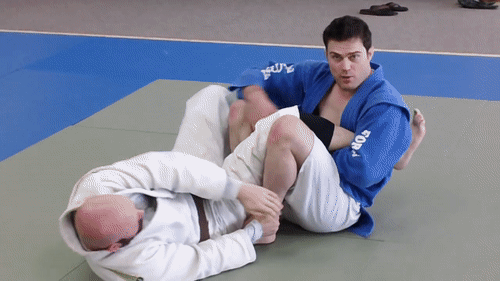Leg locks in a self-defense context
In the past Leg locks tended to be looked down upon in the BJJ community. Historically, there are three reasons this was so.
- They were seen as cheap because they generally only were used when nothing else better could be done. When someone could not pass guard, or stay on top, or finish from the top, leg locks were the answer. It was a mark of someone who was not that good at jujitsu.
- They cause a lot of needless injury in training. Leg locks are mostly applied against the knees and ankles, which are much weaker in construction than other body parts, and there is a much narrower window of the start of the submission to the point of injury. With a kimura for example, unless there is some underlying physical condition, most people can take a lot of movement and articulation before things tear and break. With the knee especially, only a very tiny range of movement can blow out the ACL and leave someone needing surgery and long recovery.
- Until recently, they were more of an “add on” to jujitsu, and therefore there was a lack of congruence with those attacks versus the typical BJJ offense. In other words, with most proven attacks like a straight armbar or a rear naked choke, it came out of positional dominance. With leg locks, they more generally were sudden moves that either worked spectacularly, or failed miserable because they were not positional based. That has changed over the last few years, mostly through the work of the “Danaher Death Squad” and the Renzo Gracie gyms, but it was true for most of the past.
These issues with leg locks do matter for self-defense as well. Obviously the injury part is important. None of us can afford to be on crutches for six months because we needed ligament reconstruction after a session of drilling leg attacks. And that idea of them not being integrated into the conceptual matrix of “position before submission” is key because while if it fails in competition or training, it is just an ego crush, but for self-defense it could be your life.
But along with those concerns, there are two other problems that need to be taken into account with leg locks when we are dealing with the self-preservation idea.
The most pressing is that to do almost any reliable leg lock you need to use both your arms to control and attack the legs. But when you do so, that leaves your opponent’s arms to be completely free to do whatever he wants to include defending and countering your leg attack, as well as striking, or the crucial part that he can deploy and use a weapon. We don’t see leg locks in MMA to the extent that we do in grappling only matches because just adding the striking component makes it more complex and difficult. Just imagine how much worse it could be if the person getting locked could pull a gun, knife, etc.
The other problem is sort of a corollary to the above paragraph. While leg locks can be extremely painful and can sap the will to fight from someone (as someone who has been injured by leg locks, I can tell you there was not much I wanted to do afterwards but hold my knee and try not to scream), you are relying on a lot of pain to end the fight rather than damage. Yes, having your knee blown out can end the fight, but since you are already on the ground, and it does not affect the arms, if the other person can overcome the pain they are still capable of fighting at a high level. That is not so true with arm attacks since turning a two armed fighter into a single arm one can be a good way to diminish their capacity to continue, and it is obviously not true at all with chokes and unconsciousness. And some leg attacks don’t even cause injury but are pure pain compliance, such as calf crushers.
One place where leg locks can work even in a streetfight/self-preservation scenario is when we stop looking at it as a technique to finish, but rather as we look at all other submissions in BJJ – as a positional control first, and only after that as a finish in and of itself. For example, my friend Craig Douglas of Shivworks has shown video from his flagship ECQC coursework where students have used the set up of a leg lock to control the other person and instead of finishing with the leg attack, the student instead deployed a weapon. Think of the ashi-garami control that John Danaher shows as integral to his system of leg attacks. This is where the idea of leg attacks have been mated with the BJJ principle of dominant positional control before the submission and it makes the use of leg attacks a bit more functional outside of grappling mats.
Neither of these two issues should completely preclude the use of leg locks, but they need to be understood and addressed. Understand when they should be used, and when they should not. I would also not make it a priority for people under purple belt level. I think the normal focus on positional dominance and limb control, as well as high percentage fight finishers like chokes should be the main focus until the student is at least with a few stripes on his blue belt.
All aspects of BJJ should be trained to some level, but that does not mean that each aspect is equal in efficacy.

